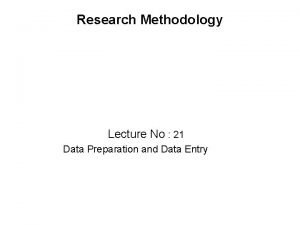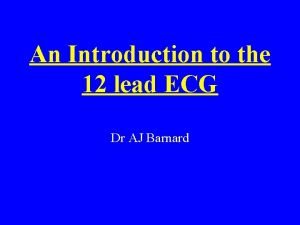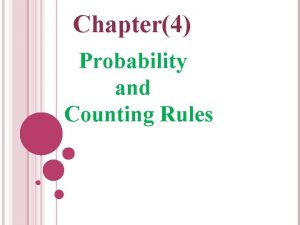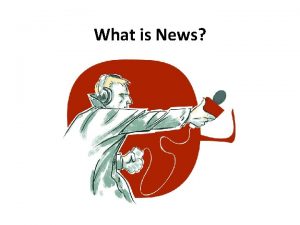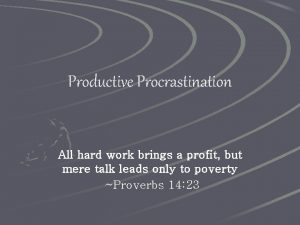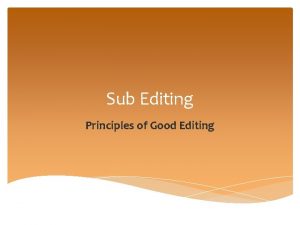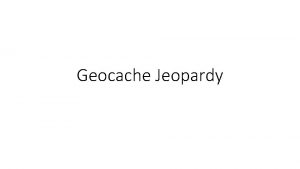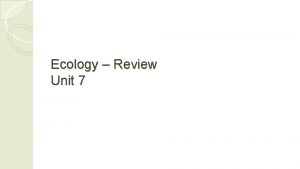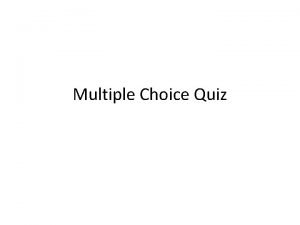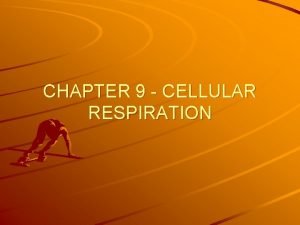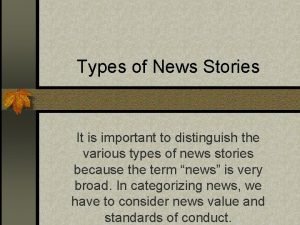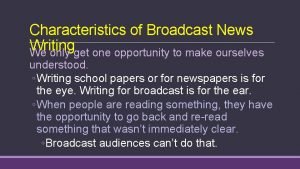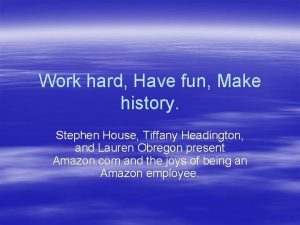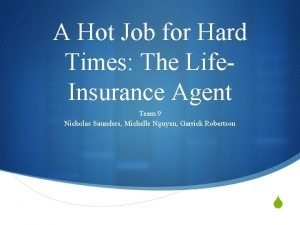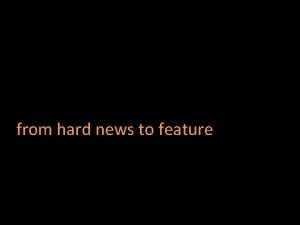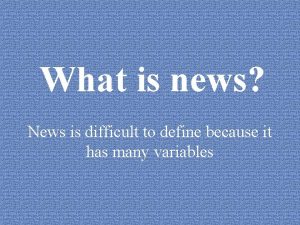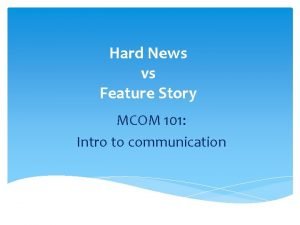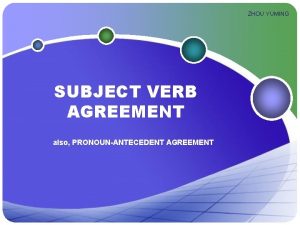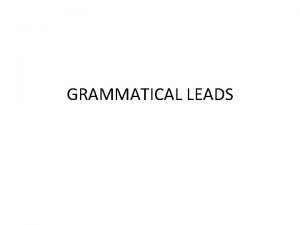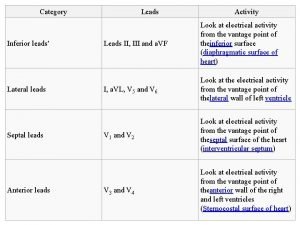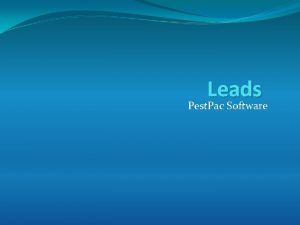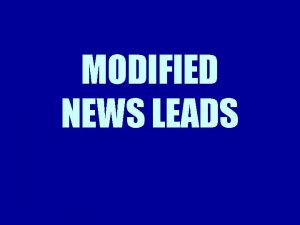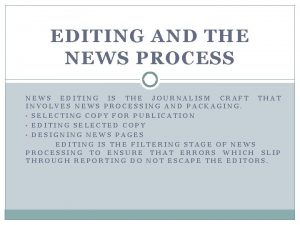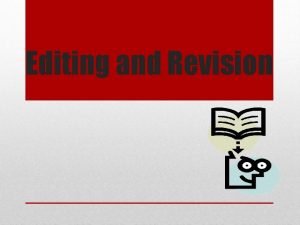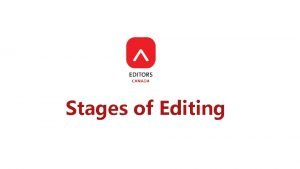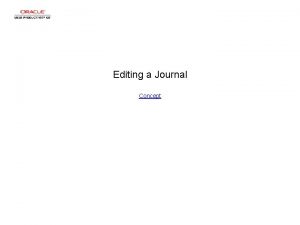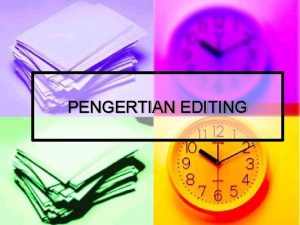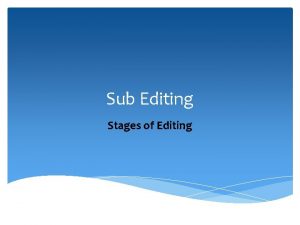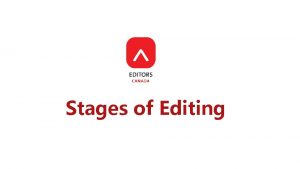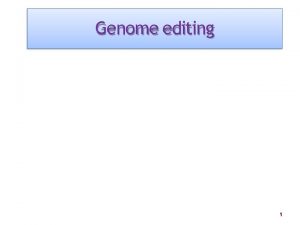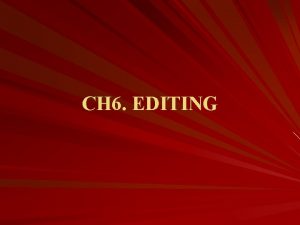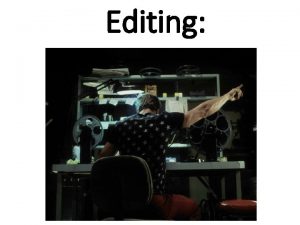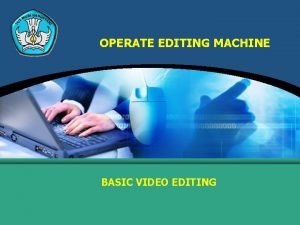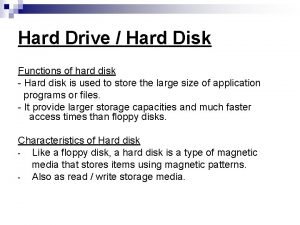Editing Hard News Leads News stories news releases
























- Slides: 24

Editing Hard News Leads News stories, news releases, newsletter articles, blog posts, etc.

Would you keeping reading? • The West Lafayette City Council took care of various business Monday night.

Would you keep reading? • The West Lafayette City Council outlawed all street parking near Purdue’s campus Monday night.

• The lead is the opening sentence of any article, release, item you write for informational purposes. • It should be one to two sentences long (one preferred for news articles) • The reader either keeps reading or stops based on this sentence.

• Hard news leads focus on the news immediately • The event, the announcement, the result is in the lead.

Headline Byline Lead

• In reality, you as an editor are making minor, routine changes, if any at all. It depends on the writer, actually.

Tip 1 • Make sure the focus – the hard news, the point of the story, a summary of the big news – is in the lead. • We don’t just say The board of trustees met Thursday. We say:



Also does the lead put the news in context if possible

Tip 2 • Present the main facts without the lead being so crammed that readers choke on information. (You decide what of the who, what, when, where, why and how is most important) • Use the second paragraph to follow up (support) the lead by providing more information/answering questions raised in lead

Notice, for example, lengthy name of consortium left out of lead

Headline, more of this later) Lead highlights findings Second paragraph adds information not room for in lead

• Make sure the relevance is there in the lead.

Notice the lead is a complete sentence • Beef Quality Insurance training sessions to help producers earn certification. • (This is an example of NOT a complete sentence, and thus, NOT a lead. )

Tip 3 • Make sure there are no obvious spelling or grammatical errors. These really “pop” in a lead. • Make sure IF you edit (change) the lead, you don’t introduce these errors.

Tip 4 • Make sure no unsupported questions are raised in the leads.

Tip 5 • Don’t hype leads. Don’t overstate or oversensationalize the facts. • Also, watch for self-serving sources who try to make themselves look big by hyping the facts

Tip 6 • Watch for DULLNESS. Leads must get the reader into the story. Include the information that will do this.

Tip 7 • Watch for opinion; watch for libel.

Tip 8 • Usually, we don’t need attribution in the lead. It can wait until subsequent paragraphs (unless a speech/announcement story)

Tip 9 • Second-day leads: Make sure new angle to the story is in the lead. But make sure that high in the story the reporter repeated the details of the event (first day news)

 Linear and nonlinear editing
Linear and nonlinear editing Field editing and central editing in research
Field editing and central editing in research Pathologic q wave
Pathologic q wave Chapter 4 probability and counting rules answer key
Chapter 4 probability and counting rules answer key Soft news
Soft news Wikipedia screenshot
Wikipedia screenshot Slidetodoc
Slidetodoc The yucca plant releases a strong scent at night
The yucca plant releases a strong scent at night Cellular respiration releases
Cellular respiration releases The yucca plant releases a strong scent at night
The yucca plant releases a strong scent at night Cisco matrix analytics
Cisco matrix analytics Which structure releases glucagon
Which structure releases glucagon Cellular respiration releases
Cellular respiration releases 8 values of news
8 values of news Types of news stories
Types of news stories Kinds of news
Kinds of news Characteristics of broadcast
Characteristics of broadcast What makes water hard
What makes water hard Work hard play hard make history
Work hard play hard make history Hard times hard drive
Hard times hard drive Hard news lead
Hard news lead Define news values
Define news values News story example
News story example Define hard news
Define hard news Both of the statues on the shelf is broken
Both of the statues on the shelf is broken

